Despite having the common name ‘crab’, hermit crabs are not ‘true’ crabs, meaning they are not a part of the clade Brachyura. They belong to its sister group, Anomura, which also contains porcelain crabs, squat lobsters, mole crabs, and king crabs. Broadly speaking, hermit crabs encompass the superfamily Paguroidea which includes the king crabs. The marine hermit crabs in the family Paguridae are believed to be the sister group to the king crabs (Lithodidae), while the other main marine lineage (Diogenidae) is a sister group to the terrestrial hermit crabs (Coenobitidae, which includes the coconut crab, the largest terrestrial extant arthropod). So, next time you are dining on Alaskan king crab legs, remind yourself you are eating a really expensive hermit crab :-P. Most hermit crabs are best known for their habit of residing in empty gastropod shells, a feature secondarily lost in king and coconut crabs. Today we will be looking at a hermit crab produced by TNG, a company that has gotten some notoriety for producing PVC versions of high-end sculptures of prehistoric animals (usually in conjunction with the original artist or producer, I might add). In 2024, TNG released eight (that I know of) marine animals, that appear to be original sculpts. The base on mine has a copyright year of 2022, so that may have been when production started, but from what I can tell they came out this year.
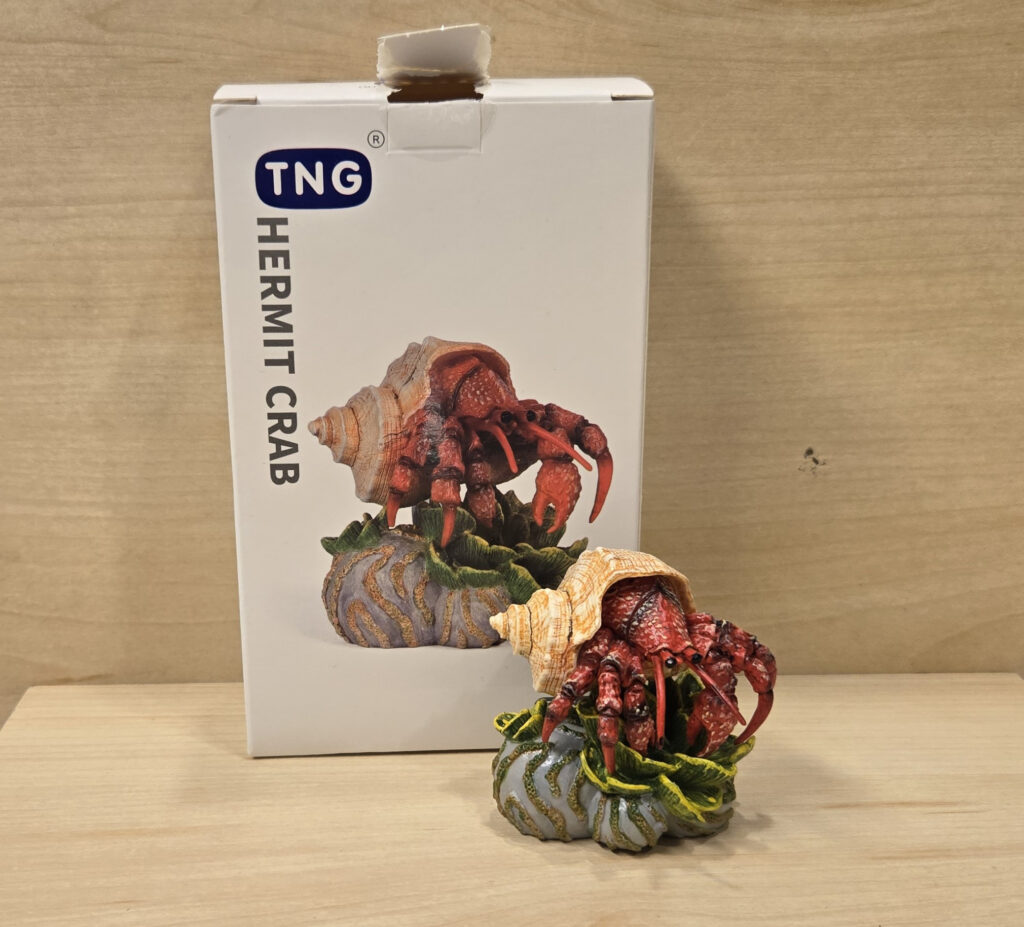
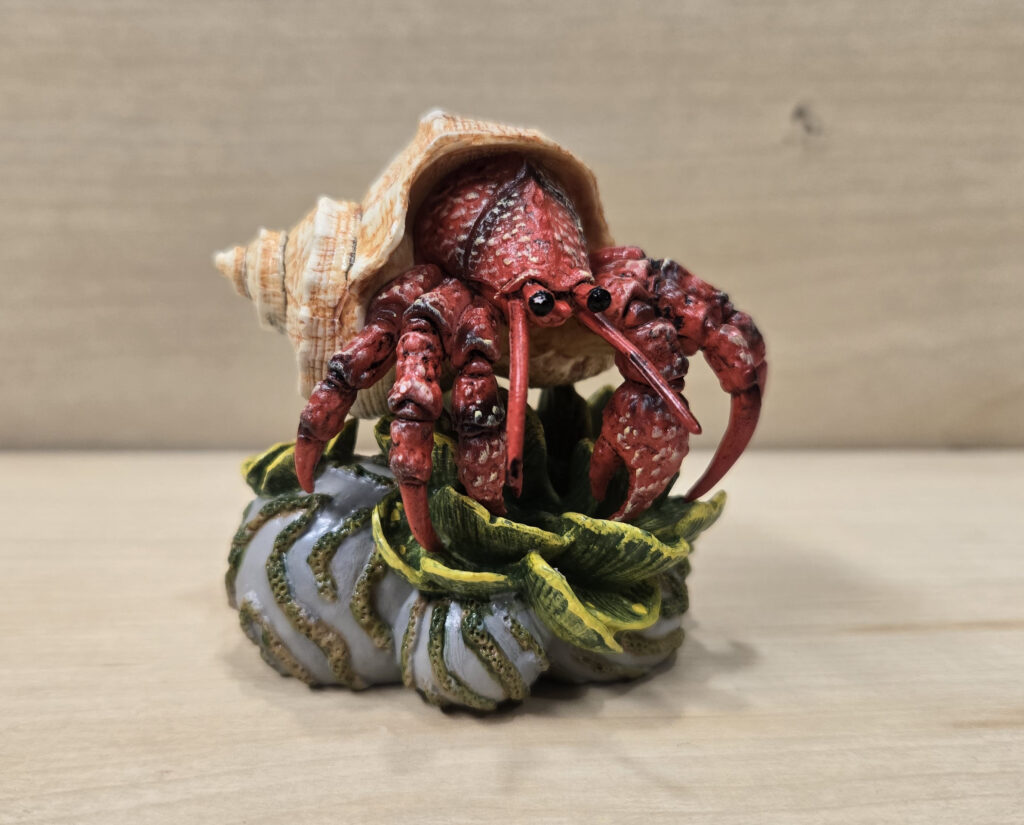
First, let’s try and elucidate the identification of this hermit crab. The morphology, in conjunction of course with the base and theme of the series, suggests that this is one of the marine hermit crabs, probably something in the families Paguridae or Diogenidae. A red marine hermit crab? Yikes! The possibilities are endless! The claw on the left side is enlarged, supporting the family Diogenidae, which are commonly referred to as ‘left-handed hermit crabs’ for that very reason. For the purposes of my collection, I am going to database it as Dardanus megistos, commonly known as the white-spotted hermit crab, spotted hermit crab, or hairy hermit crab. The two main reasons for this is are the species geographic distribution and the color, which I will cover in more detail below. Dardanus megistos is a common and familiar species, widespread throughout the Indo-Pacific, from East Africa to the South China Sea, south to Australia and east to Hawaii.
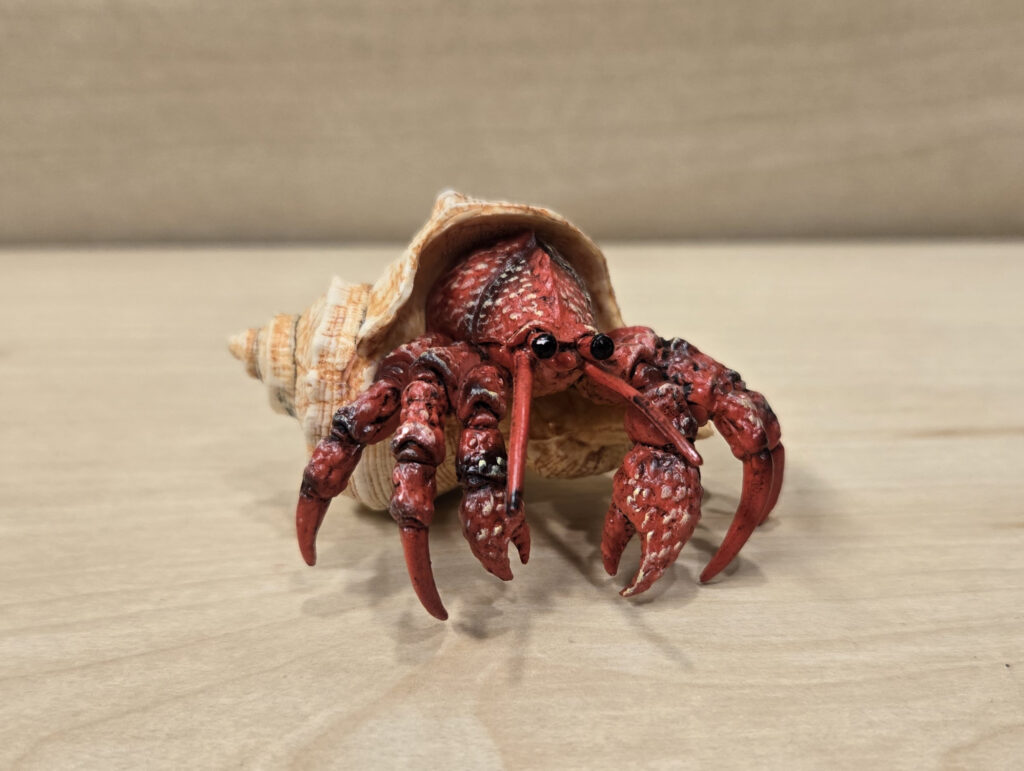
The crab (off its base) is about 6.5 cm across its widest points. I had difficulty finding metrics for the full size range of an adult animal. The shield is roughly 1.5 cm, which puts in the 1:1 scale range for a small specimen, but looking at images online, it could easily be 1:2.
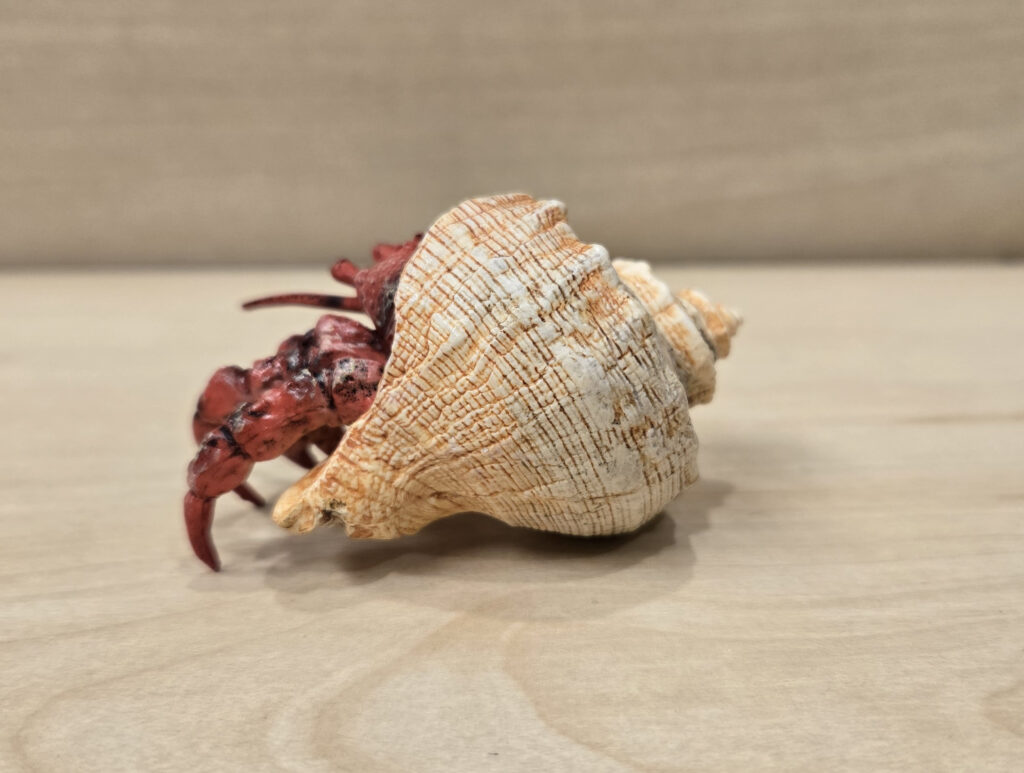
The crab is permanently affixed to its gastropod shell. The detail of the crab (and the shell) is quite good, with small tubercles over the dorsal surface of the crab and the fine striations all over the shell. There appears to be serrations running down the midline of the crab’s shield. I can’t find any indications this occurs in any hermit crab (with limited research, please keep in mind), and I suspect this was just the sculptor expressing his or her artistic license. As mentioned earlier, the body of the crab is red, with both dark and pale highlights accenting various joints and sutures on its exoskeleton. It is also covered with white maculae, which at first I thought represented setae, but now I am interpreting to represent the white spots of D. megistos (or both!). Ideally, each white spot should be bordered by black, but that would be a meticulous feat for a smallish model.
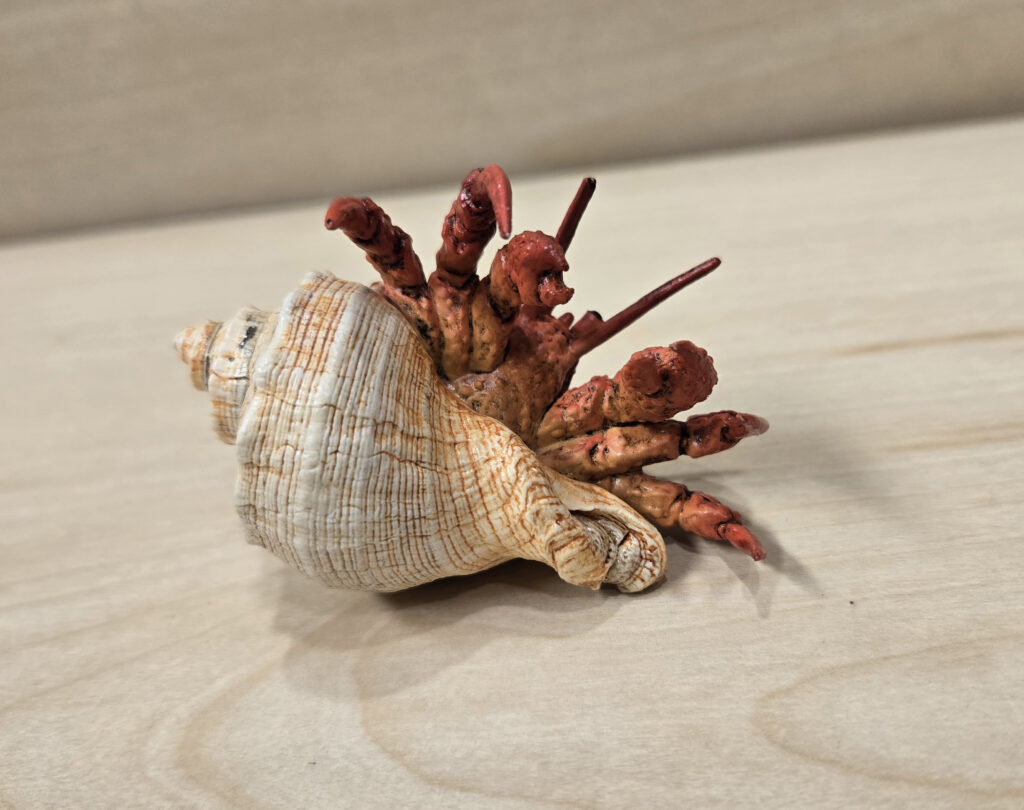
The base was even more of a challenge to identify than the crab. At least the bottom of the base is stamped ‘Agaric Coral’ meaning it probably represents something in the family Agariciidae. But does that name refer to the grey spheroid bodies or the plate-like green bodies or both? The green structures look a lot like Astreopora monteporina, but that’s a member of the family Acroporidae. If the term agaric coral refers to the green structures, then it might refer to the mint pavona, Pavona frondifera, or maybe even lettuce coral, Agaricia agaricites. I am also not sure if the grey spherical structures and green plate structures are the same or different species, as several species of corals can take on completely different morphotypes. To me the grey spherical structures look like a kind of brain coral of the families Mussidae or Merulinidae. Anyway, I am not going to drive myself nuts trying to identify the coral, as its primary function as I am concerned is just a base for the crab, but if anyone has any thoughts, I’d be happy to hear them! I will say that the coral, at about 5.8 cm across its widest points, is probably not in scale with the crab.
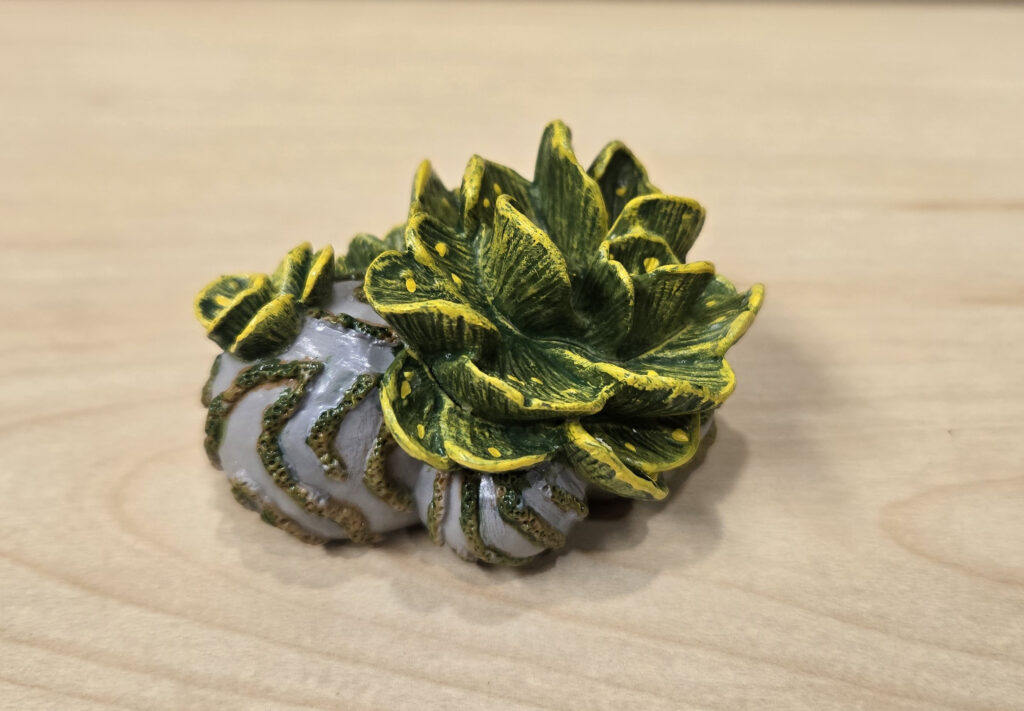
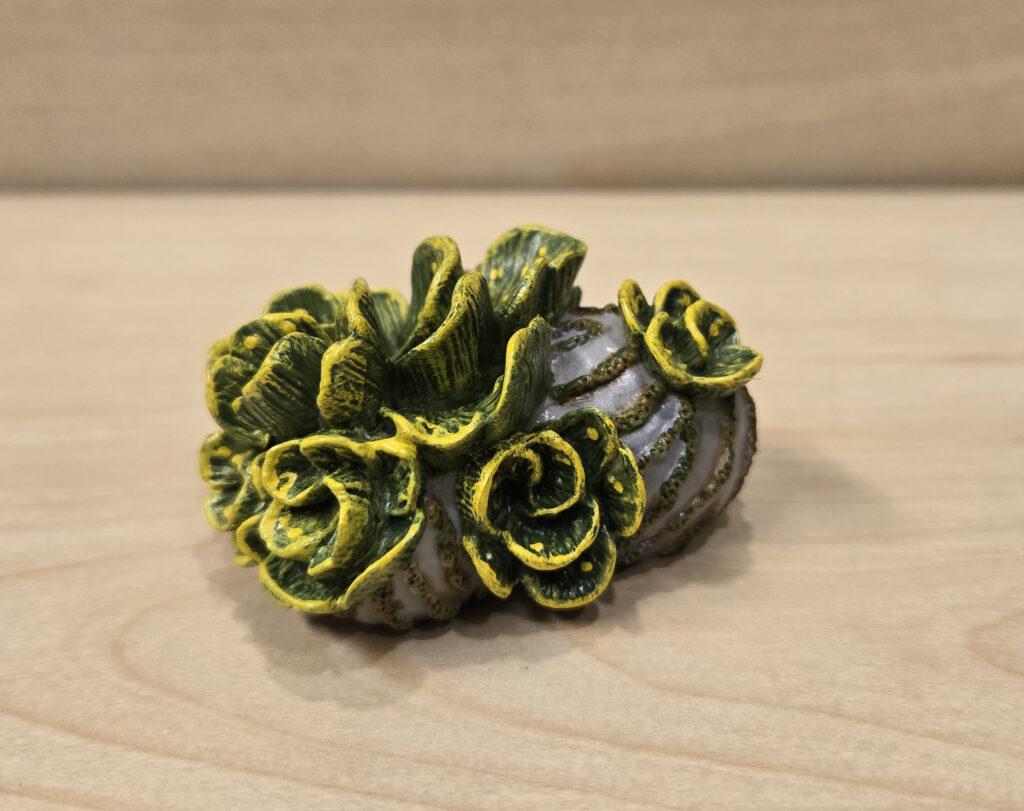
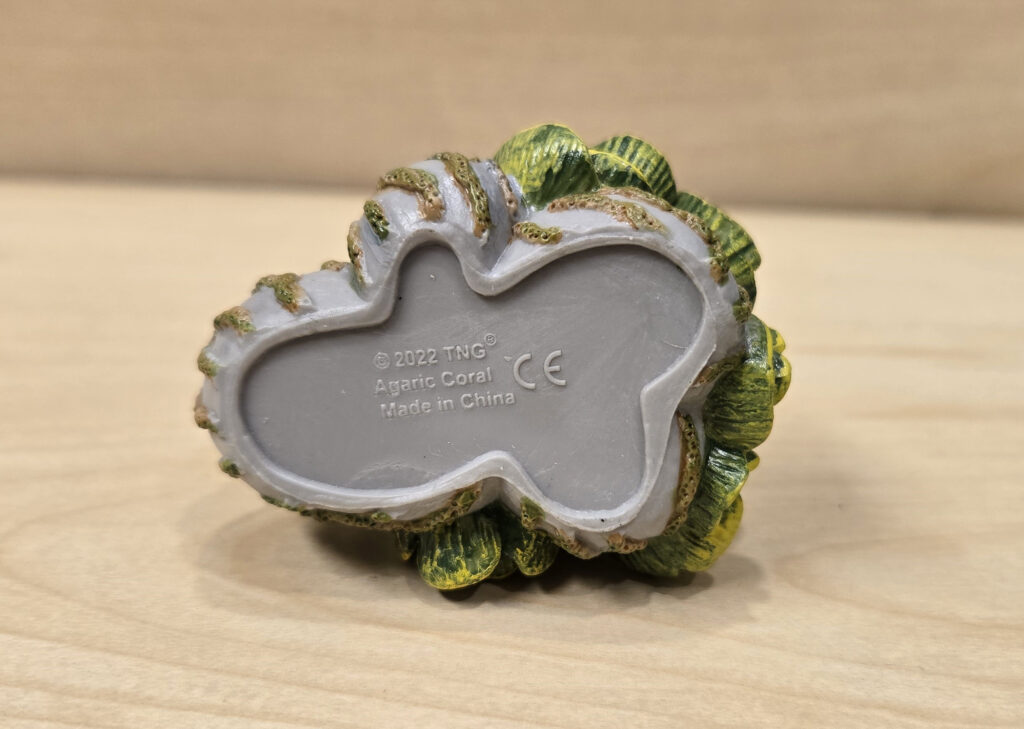
Overall this is a very nice rendition of a hermit crab. If one accepts my identification of D. megistos, this would only be the second figure of that species, following the Yowie produced by Cadbury for the original Australian line in 1999. It’s nice to see TNG branching out to extant animals, and using original sculpts as well! If I remember correctly, there were some insect prototypes as well; I look forward to those if they ever come out!
Disclaimer: links to Ebay and Amazon on the AnimalToyBlog are affiliate links, so we make a small commission if you use them. Thanks for supporting us!



